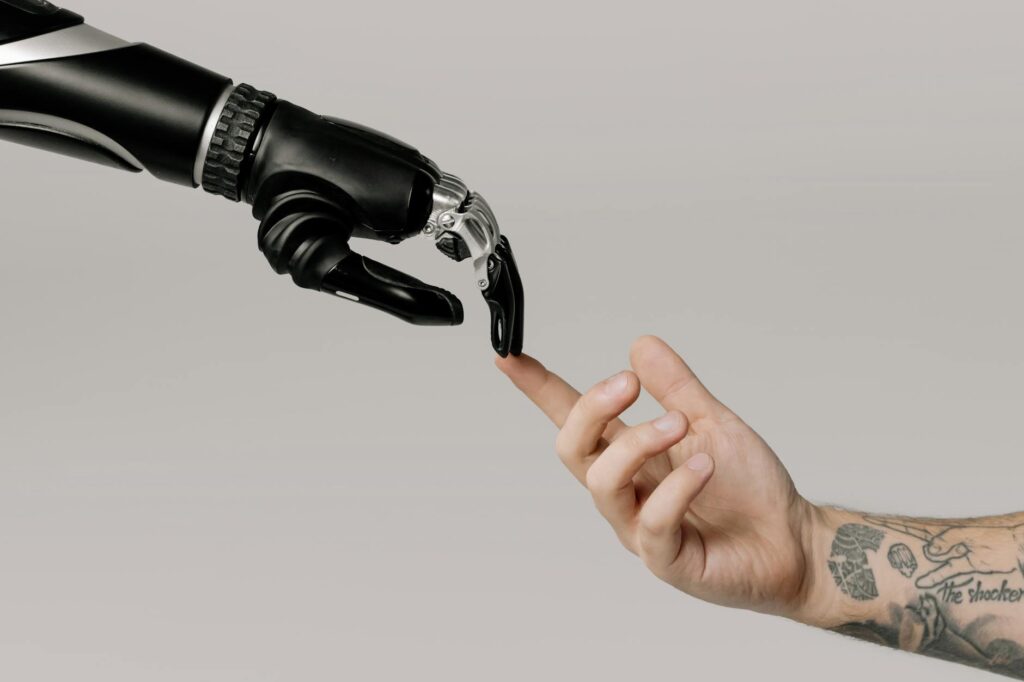Can AI power progress with remote patient monitoring technology?

Technology tamfitronics
One of the more promising healthcare AI advancements is the development of remote patient monitoring tools such as symptom checkers, symptom assessments and digital self-triage.
These tools not only help redefine and enhance patient experiences, they potentially can streamline patient flow, reduce healthcare disparities, and improve health outcomes through more personalized and precise care recommendations.
This is particularly significant at a time when healthcare availability is diminishing, highlighted by the closures of facilities like Walmart Health centers and other major providers. AI-driven tools offer the potential to bridge these gaps by offering virtual consultations and remote monitoring, making healthcare not only more accessible but also more adaptable to the needs of diverse populations.
Amanda L. Bury is chief commercial officer at Infermedica, a digital health company specializing in AI-powered systems for symptom analysis and patient triage.
Healthcare IT News spoke with Bury to discuss how the remote patient monitoring landscape lends itself to the use of artificial intelligence. She offered examples of AI tools being developed and used today in the field of RPM.
She also discussed how AI combined with RPM can drive more efficient care and reduce unnecessary burdens that impede the patient experience – and how a shift toward technology-enhanced healthcare is essential in democratizing access and ensuring all individuals, regardless of their geographical location, receive timely and effective care.
Q. How does the remote patient monitoring landscape lend itself to the use of artificial intelligence?
A. Adopting remote patient monitoring has been challenging for years due to the complexity and logistical hurdles faced by both patients and providers. Artificial intelligence has the potential to ease these barriers and significantly enhance how patients interact with their health data.
One of the biggest obstacles in RPM is helping patients make sense of the vast amounts of data being generated. AI-driven tools can transform this data into personalized insights that are easier for patients to understand. Instead of being overwhelmed with information, patients can receive clear, actionable advice tailored to their specific health conditions, making their care more tangible and accessible.
AI also has the power to revolutionize early detection of health issues through RPM, particularly for patients with chronic diseases or multiple comorbidities. Traditionally, these patients would need to attend multiple appointments, often requiring time and transportation to clinics where older technologies are manually assessed.
Now, AI and modern RPM technologies allow continuous monitoring from the comfort of home. AI can analyze real-time data to detect subtle changes or patterns that might indicate a problem before it escalates. This gives healthcare providers the ability to intervene early, improving outcomes and reducing hospitalizations.
In addition, AI’s ability to process and analyze data continuously enables more dynamic care paths. Instead of waiting for scheduled visits to track progress, AI can provide immediate feedback to both patients and care teams. For example, if a patient’s glucose levels are trending higher, AI can prompt timely interventions like medication adjustments.
This level of proactive and personalized care would be difficult to achieve without AI-driven RPM. Furthermore, AI can simplify the user experience, making RPM devices more intuitive with voice commands and automated readings, encouraging wider adoption and ultimately making healthcare more efficient, accessible and personalized.
Q. What are examples of AI tools being developed or in use today in the field of RPM?
A. AI tools are transforming the field of RPM by offering solutions to some of healthcare’s most pressing challenges, like caregiver shortages and limited access to providers. One tool that is gaining traction is the telehealth kiosk, which, while not entirely new, is being used in more meaningful ways.
These kiosks allow patients to be triaged for low-acuity conditions outside of traditional healthcare settings. Placed in convenient locations like malls, pharmacies and workplaces, they bring healthcare directly to patients, offering quick and accessible care. This not only improves access but also reduces the burden on providers by addressing minor concerns on the spot.
AI-driven diagnostic tools inside pods and kiosks can perform services like blood work and vital sign monitoring. Overall, AI-powered tools like these are making RPM more accessible and efficient.
They provide patients with immediate health guidance, reduce the need for emergency room visits, and ease the load on overworked providers. With continuous monitoring and real-time data analysis, these tools empower patients to manage their health more effectively while helping the healthcare system become more streamlined and responsive.
Q. You say AI combined with RPM can drive more efficient, patient-centered care and reduce unnecessary burdens that impede the patient experience. How so?
A. It can do so by simplifying the care process and reducing unnecessary burdens on patients. In our early detection research, we focused on the five leading causes of mortality – heart attack, stroke, asthma, pneumonia and pulmonary embolism. These are conditions where early detection can mean the difference between life and death.
AI can analyze vast amounts of data from RPM tools to identify subtle warning signs and help prevent these critical conditions before they escalate. Our symptom checker, for instance, is a tool designed to help patients when they’re feeling under the weather. It can identify patterns in symptoms that point to a more serious underlying issue, providing valuable insights that might otherwise go unnoticed.
AI also helps enhance the patient experience by integrating with everyday tools like the Oura ring or smartwatches, which are now more widely adopted and can be connected to a multitude of patient applications. These wearables monitor heart rate, sleep patterns and physical activity, all without the patient having to manually track or report their data.
Clinicians can tap into this data to better understand the patient’s daily activities and overall health status, leading to more informed care decisions. This means patients don’t need to constantly self-report or show up in person for check-ups, easing their burden while still providing doctors with critical, real-time information.
By leveraging AI to integrate these tools seamlessly into other systems, we’re creating slick care pathways that reduce the need for in-person visits and prevent costly long-term care. AI can process and filter out what’s most critical for clinicians, helping them prioritize their attention on the patients who need it most.
This allows for more effective triaging and ensures the most urgent cases rise to the top of their workload, improving overall efficiency and reducing the risk of overlooking serious conditions. By using AI in this way, we can reduce disease rates, improve patient outcomes and streamline the entire care experience.
Q. More broadly, you suggest a shift toward technology-enhanced healthcare is essential in democratizing access and ensuring all individuals, regardless of their geographical location, receive timely and effective care. How is this shift working today?
A. I’ve had the unique opportunity to observe how healthcare is consumed and delivered in more than 30 countries globally, and it’s clear that a shift toward technology-enhanced healthcare is essential in democratizing access to care. In many government-led programs, we’re seeing effective and efficient methods of triaging patients at scale.
This shift is driven by channel-specific delivery methods that leverage consistent capabilities, ensuring that no matter how a patient seeks care – whether through telehealth, in-person visits or remote monitoring – the care provided is reliable and timely. Technology is playing a crucial role in ensuring that people, regardless of their geographical location, can access quality healthcare.
One of the ways government-led programs are achieving this is by focusing on health literacy and properly educating their citizens. The National Institutes of Health recommends health materials be written at a 6th- to 7th-grade reading level, which is critical because health literacy rates are often lower than we expect. AI tools are becoming instrumental in bridging that gap.
Patients, especially in rural or underserved areas, need support to understand their own health data and make informed decisions about their care. AI can take complex medical information and translate it into digestible, personalized insights, ensuring patients are connected to the right level of care regardless of whether they’re in an urban hospital or a rural clinic.
This shift is also about ensuring equitable access to healthcare. By leveraging AI and consistent triaging methods, we’re seeing care pathways that are adaptable to the needs of different populations. AI helps remove barriers to care by integrating tools that connect patients with clinicians in real time, even in remote settings.
This ensures that whether a person is living in a large city or a rural area, they can receive timely and effective care, guided by AI systems that help navigate their health journey. This technology-enhanced approach is making healthcare more inclusive and equitable for all.
Follow Bill’s HIT coverage on LinkedIn: Bill Siwicki
Email him: [email protected]
Healthcare IT News is a HIMSS Media publication.
Discover more from Tamfis Nigeria Lmited
Subscribe to get the latest posts sent to your email.



 Hot Deals
Hot Deals Shopfinish
Shopfinish Shop
Shop Appliances
Appliances Babies & Kids
Babies & Kids Best Selling
Best Selling Books
Books Consumer Electronics
Consumer Electronics Furniture
Furniture Home & Kitchen
Home & Kitchen Jewelry
Jewelry Luxury & Beauty
Luxury & Beauty Shoes
Shoes Training & Certifications
Training & Certifications Wears & Clothings
Wears & Clothings
















